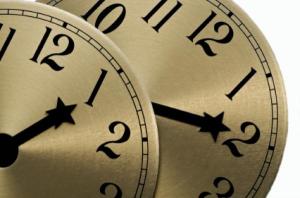Daylight Saving Ends – How to Fall Back Without Falling Apart
 It’s that time of the year again… On Sunday, November 3rd, Daylight Saving will end (for US and Canada). Before you had kids, Daylight Saving adjustments meant an extra short/long weekend and having to adjust the clock on a bunch of electronics. With kids, however, it can impact your family for days, especially with young children. When Daylight Saving ends in the Fall, the most typical sleep disruption is that kiddos continue to wake up at their old time, which is now an hour earlier. If that does not sound good, keep reading because there are some strategies you can use to transition to the new time as seamlessly as possible and maintain your current wake-up time.
It’s that time of the year again… On Sunday, November 3rd, Daylight Saving will end (for US and Canada). Before you had kids, Daylight Saving adjustments meant an extra short/long weekend and having to adjust the clock on a bunch of electronics. With kids, however, it can impact your family for days, especially with young children. When Daylight Saving ends in the Fall, the most typical sleep disruption is that kiddos continue to wake up at their old time, which is now an hour earlier. If that does not sound good, keep reading because there are some strategies you can use to transition to the new time as seamlessly as possible and maintain your current wake-up time.
There are a few options: we can make some changes before or after the time change and we can make these changes gradually or all at once. You can choose what will work best for your child based on their temperament, age and flexibility in your schedule the week before.
“The day of” Approach
With this approach, our goal is to shift the 60 min in 1 day. On the morning following the time change, let your child wake up at their usual time as per the “old” time -meaning it’s going to be 1 hour earlier if you look at the clock. For example, if your kiddo usually wakes up at 6 am, let her start the day at 5 am (which is her usual 6 am).
During the day, follow your child’s regular schedule for sleep, meals, naps, bedtime, etc. according to the new time. For example, if your child’s first nap is usually at 9:30 am, then keep them up until the clock shows 9:30 am. Same for meals and bedtime.
That means that your child will be awake for an extra hour that day. Having said that, watch your child carefully and don’t let them get overtired. If they’re totally exhausted, it’s okay to let them nap/eat 10-15 minutes earlier than their time, but as close to their usual schedule is best.
This approach works best for: older children and/or for children that tend to adjust to changes in schedules fairly easily. If this does not fit your child, then follow one of our more gradual baby sleep strategies described below.
The Gradual Approach
Another option is to ease into the change by making small adjustments to your child’s sleep and wake times in the days before Daylight Saving ends. Adjust your child’s bedtime, naptime and wake up time later by 15 minutes every day, so that by Sunday, it’ll be less of a shock.
The first step is to push the first nap of the day 15 min later. Another way of saying this is to stretch the first window by an extra 15 min. If the first nap starts later, it should end later, which will then shift the subsequent naps (if your kiddo takes multiple naps) 15 min later, and then we can shift bedtime 15 min as well. We temporarily increase the first window by 15 min, but then keep the windows the same for the rest of the day.
Then the next day, shift the first nap by another 15 min, and so on, until you have shifted by 1 hour. If you do the first shift on the Wednesday (10/30), your child should be back to their regular schedule (what the clock shows) by Sunday morning.
I mentioned starting on Wednesday above, but your could start later in the week as well, or after the time change. It’s the same concept, but the numbers on the clock will look different whether you do it prior or after the time change.
This gradual approach works best for: younger children and/or for children who are more sensitive to schedule changes and are already waking up too early. You also need to have the flexibility to make these changes in their schedule.
Regardless of the approach you choose, having an already established routine and schedule will make it easier to adjust. Don’t be surprised if your child continues to wake up early initially. However, try to not let them start the day until their regular wake-up time. This is usually lasts for a few days, sometimes longer, but eventually their bodies recognize they need more sleep and they’ll sleep longer.
If your child is in a bed (and not a crib), I recommend using a child’s “wake-up clock”. They help children know when it’s time to stay in bed and when they can get up to start the day. They can be especially effective to help manage this time change.
If you have questions about your child’s sleep and would like more support, head over HERE to learn more about how we can work together or contact me.
You can also join my free private Facebook group for sleep support.
